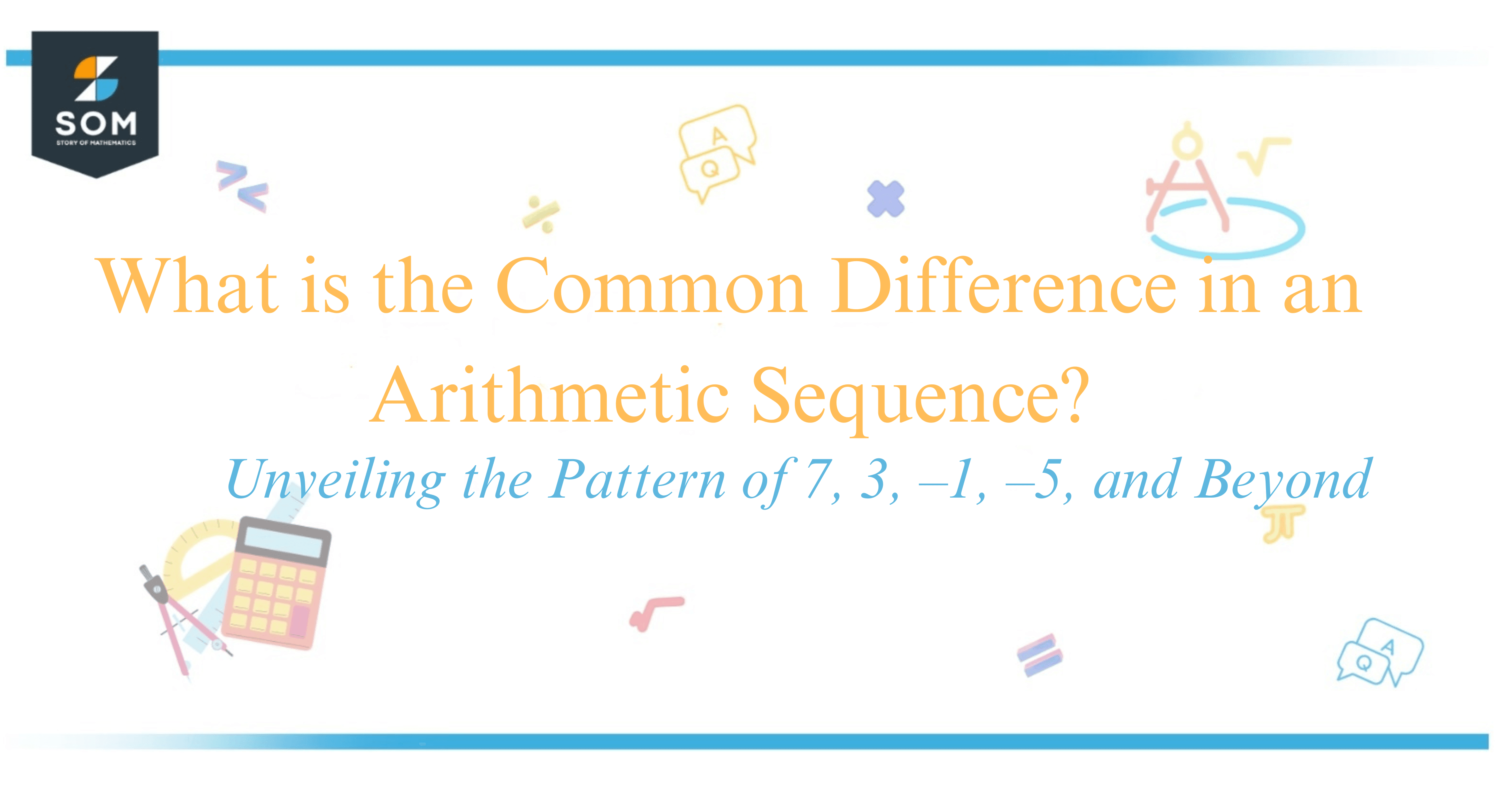
The common difference in the arithmetic sequence 7, 3, –1, –5, … is –4.
In any arithmetic sequence, the common difference is obtained by subtracting a term from the subsequent term. For clarity, if we take the second term, 3, and subtract the first term, 7, we get 3 – 7 = –4. If I subtract any term from the term that follows it in this sequence, the result will consistently be –4.
This value is what allows us to predict the pattern of the sequence, making it a foundational aspect of understanding arithmetic sequences.
Each term in an arithmetic sequence can be found using the formula $A_n = A_1 + (n – 1)d$, where $A_1$ is the first term, $A_n$ is the nth term, and ( d ) is a common difference. In this sequence, $A_1 = 7$ and ( d = –4 ), confirm that any term can be calculated by starting at 7 and adding the product of the position of the term minus one and –4.
Calculating Common Difference
In an arithmetic sequence, the common difference is the constant value that each term is increased or decreased by to get the next term. It’s the key to understanding and working with these sequences. To find it, simply subtract any term from the following term. In our sequence, let’s look at the first two terms:
- To find the common difference (d), subtract the second term (a₂) from the first term (a₁): $$ d = a₂ – a₁ $$
- For our sequence: $$ d = 3 – 7 $$ $$ d = -4 $$
This calculation shows that the common difference is -4, which is a negative value, indicating each term in the sequence decreases by 4 from its predecessor.
To confirm our finding, let’s subtract consecutive terms throughout the sequence:
| Term Being Subtracted (n) | Resulting Value |
|---|---|
| 3 (a₂) – 1 (a₃) | -4 |
| -1 (a₃) – -5 (a₄) | -4 |
Here, we consistently see that subtracting any term from its subsequent term yields -4, reiterating our calculation is correct. It’s crucial to check more than one pair of terms to ensure that the difference remains constant throughout the sequence.
Now, if I were to use a calculator designed for arithmetic sequences, I would input 7 as the first term, and a negative number, -4, as the common difference. The calculator would then confirm the subsequent terms or even the value of the n-th term based on this common difference.
We’ve established that in our arithmetic sequence, the common difference is -4. This value helps us understand the behavior of the sequence and predict future terms.
Conclusion
In the arithmetic sequence given, each number decreases by 4 from the previous one. This characteristic is defined as the common difference, typically represented by the symbol ( d ). Here, we calculate the common difference by subtracting any term from the one that follows it; for example, ( 3 – 7 = -4 ). To check consistency, a subsequent pair such as ( -1 – 3 ) also equals ( -4 ), confirming that ( d = -4 ).
Arithmetic sequences follow a pattern where each term is derived by adding the common difference to the preceding term. In mathematical terms, if $a_n$ represents the $n^{th}$ term, and $a_1$ is the first term, then the $n^{th}$ term is found using the formula:
$a_n = a_1 + (n-1)d$
Applying this to our sequence allows us to find any term’s value. Arithmetic sequences like this one are linear, meaning each term increases or decreases at a constant rate. Recognizing this rate, the common difference is crucial in understanding the structure of the sequence and predicting subsequent terms.
Here, the subsequent term after -5 would be ( -5 – 4 = -9 ), following the established pattern. Keep this simple process in mind to identify the common difference in any arithmetic sequence you may encounter.
